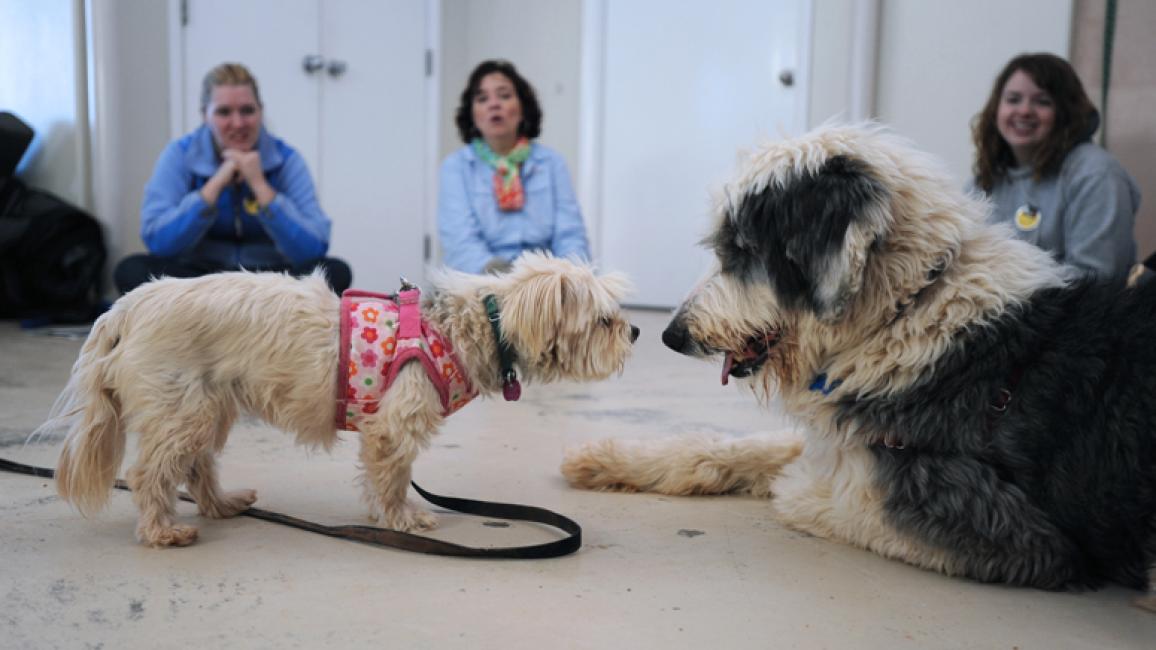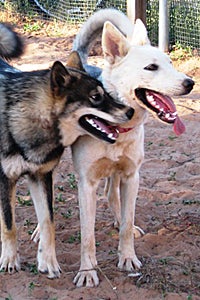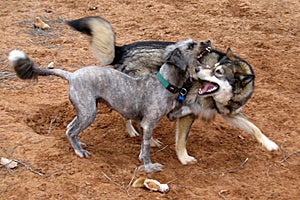Steps for introducing two dogs

 You want your dog to have canine friends — right? At the very least, you probably would prefer that your dog not turn into a Tasmanian devil every time she sees another dog. It can mean the difference between a lifetime of hanging out with canine buddies (and their human counterparts) versus avoiding other dogs altogether. The solution lies on the human end of the leash during that most important of moments — the introduction.
You want your dog to have canine friends — right? At the very least, you probably would prefer that your dog not turn into a Tasmanian devil every time she sees another dog. It can mean the difference between a lifetime of hanging out with canine buddies (and their human counterparts) versus avoiding other dogs altogether. The solution lies on the human end of the leash during that most important of moments — the introduction.
Every dog person can benefit from having a basic understanding of how to safely introduce two dogs. Sherry Woodard, Best Friends animal behavior consultant, says, “The way you introduce two dogs can set them up to become friends, or it can cause fear from a negative experience that may impact future introductions to other dogs.”
Understanding dog body language
Before introducing your dog to other pooches, you should know a little about dog body language, or get help from someone who does. Sherry says, “If you can’t tell what dogs are communicating with their bodies, get help from someone with more experience.”
Dogs with no experience or previously negative experiences meeting other dogs may feel fear when they encounter another dog. That’s why it’s important for the humans involved to be dog-savvy enough to know how to set up both dogs for success, as well as know when the introduction should be called off.
How to introduce two dogs: Steps to follow
Here are Sherry’s tips on how to introduce two dogs and ensure things go as smoothly as possible:
- Plan to meet on neutral ground. If your dog is used to meeting dogs at a pet supply store, go there or to the dog park, rather than to an area that will cause either dog to feel territorial.
- Keep both dogs on a loose lead. Any tension in the leash might communicate fear or anxiety. Walk the dogs side by side while maintaining a safe distance between them, and then have them cross paths so each dog can smell where the other has walked.
- Watch their eyes. A hard stare by either dog could mean trouble. “The first thing I look for when introducing animals is to see if they can look at each other and then look away,” says Sherry. “This simple thing should happen very quickly if they have normal healthy emotions and skills.”
 Let the dogs meet. As they approach each other, watch their body language carefully, paying attention to each dog’s entire body. Dogs meeting each other may do a bit of posturing, but if you don’t know the difference between dogs getting to know each other and dogs who don’t like each other, have someone there who does.
Let the dogs meet. As they approach each other, watch their body language carefully, paying attention to each dog’s entire body. Dogs meeting each other may do a bit of posturing, but if you don’t know the difference between dogs getting to know each other and dogs who don’t like each other, have someone there who does.- If the dogs stiffen their bodies and stare into each other’s eyes, with hair up and teeth showing, they’re probably not going to be fast friends. If they lunge or try to fight, separate them and don’t try any further introduction without the help of a professional.
- If the dogs try to play by pawing or play bowing with their legs stretched out in front, allow them to sniff each other and give praise for a nice greeting. You can continue to walk together, stopping occasionally to allow them to sniff and investigate each other.
- Once the dogs seem comfortable together and they start focusing on other things around them, you can try bringing them home together.
- Before bringing a new dog into your home for the first time, make sure all your current dog’s toys, bones and food bowls are put away, so neither dog is tempted to guard them.
It’s easier to start off the right way from the beginning than it is to go back and undo the effects of a bad experience. If you’re uncertain, find a class or a trainer who can help you and your dog learn to meet others like pros.
Learn more about introducing two dogs.
Photos by Best Friends staff and Sherry Woodard